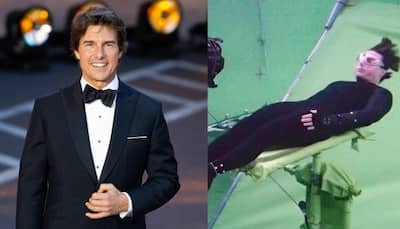Tom Cruise is no stranger to high-octane action scenes, but one of his most jaw-dropping stunts came in ‘Mission: Impossible- Rogue Nation (2015),’ when he stayed submerged underwater for a staggering six minutes and six seconds, without any special breathing apparatus. While the scene captured global attention, it also left people wondering: Is that even humanly possible?
In an undated behind-the-scenes video circulating on social media, Cruise discusses his intense preparation for the sequence. “Normally, people hold their breath for 10-15 seconds. So, I had to prove to everyone that it was actually safe and spend time with the safety officers to show them that it is possible, because I was going to be relaxed,” the actor explains.
But just how safe, or extreme, is such a feat?
Holding your breath, medically termed apnea, challenges the body in profound ways. As you hold your breath, carbon dioxide (CO₂) levels in the blood rise while oxygen (O₂) levels fall. The urge to breathe is not triggered by a lack of oxygen, but by the buildup of CO₂. This makes prolonged apnea dangerous if not done under expert supervision.
Your oxygen levels are normal. Most people can comfortably go this long.
CO₂ begins to accumulate, causing the first real urge to breathe.
Discomfort intensifies. Oxygen saturation starts dropping.
For trained individuals, this stage is tolerable. For untrained people, this can be dangerous.
Brain function begins to suffer. There is risk of blackout due to hypoxia (lack of oxygen to the brain).
That’s why Tom Cruise’s 6:06 breath-hold is nothing short of extraordinary, especially for someone not competing professionally in freediving.
Yes, but with intense training. Freedivers (people who dive deep underwater without breathing equipment) routinely train to hold their breath for 4-5 minutes or longer.
Holds the men’s static apnea world record at 11 minutes and 35 seconds (breath-hold without moving).
Surpassed Mifsud in 2021 with a Guinness World Record of 24 minutes and 37 seconds, using pure oxygen before the attempt.
A legendary freediver who held her breath underwater for over 9 minutes.
These extreme records are typically achieved after years of CO₂ tolerance training, lung stretching exercises, and meditative techniques to slow the heart rate.
For Rogue Nation, Tom Cruise didn’t fake the stunt. He worked with a professional freediving expert to build his capacity over several weeks. His training involved:
To calm the nervous system and delay the urge to breathe.
These are training tools to gradually increase breath-hold duration.
Holding the breath while completely still, to conserve oxygen.
To ensure the stunt could be performed without endangering his life.
Cruise emphasised to the safety officers that his aim wasn’t to break records, but to stay calm and perform safely within his limits. His success not only delivered a stunning scene but also underscored his reputation for pushing the envelope in Hollywood stunts.
Watch the video here:
Absolutely NOT, unless supervised by trained professionals. Attempting long breath-holds without proper knowledge can lead to blackouts, brain damage, or even drowning. Static breath-holding in pools or bathtubs is especially dangerous due to the high risk of unconsciousness.
If you’re curious about improving your lung capacity, you can try:
1. Practicing diaphragmatic breathing
2. Swimming under guidance
3. Doing yoga and pranayama to improve breath control
4. Consulting with a certified freediving instructor before attempting extended breath-holds
Tom Cruise’s six-minute underwater stunt wasn’t just cinematic magic, it was a real, high-risk accomplishment that took weeks of disciplined training. While human breath-holding capabilities can be surprisingly impressive, they come with serious physical risks and require extensive preparation.
So, the next time you watch that Mission: Impossible scene, know this, it wasn’t a camera trick. It was a feat of human endurance, courage, and control. Just don’t try replicating it on your next pool day.
Stay informed on all the , real-time updates, and follow all the important headlines in and on Zee News.








